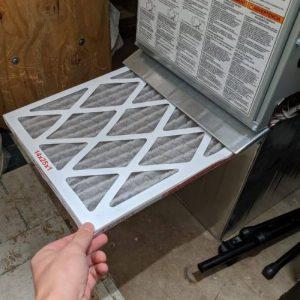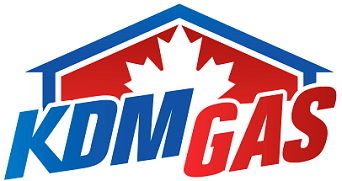 Furnace filters remove various particles from the air before they enter your heating system through the return ducts. Removing these particles helps protect sensitive components in your furnace (such as the blower fan) and improves your indoor air quality. Furnace filters can protect your furnace from the following substances:
Furnace filters remove various particles from the air before they enter your heating system through the return ducts. Removing these particles helps protect sensitive components in your furnace (such as the blower fan) and improves your indoor air quality. Furnace filters can protect your furnace from the following substances:
• Dust
• Pollen
• Pet hair or dander
• Smoke and fumes
• Mould spores and mildew
• Bacteria
• Viruses
One handy tool you can use to assess a potential filter’s effectiveness is its MERV rating. MERV ratings exist on a scale from 1-16. Essentially, the higher a filter’s MERV rating, the smaller the particles it can catch. You may not need to buy filters with the highest possible MERV rating you can find, but filters with a high MERV rating offer several advantages over their less effective counterparts. Putting filters with high MERV ratings in your furnace can help you by:
• Reducing allergy symptoms for people in your building.
• Protecting people in your building who have autoimmune diseases from bacteria and viruses.
• Noticeably improving the air quality in your home.
What Are the Different Types of Furnace Filters?
While there are various furnace filters to choose from, Action Furnace is committed to providing only the best for your home. During your annual furnace tune-up, club members will receive a replacement of your old filter and a year’s supply to help keep your furnace running efficiently. However, if you’re keen on finding replacement furnace filters on your own, some of the filters you might find at your local hardware store include:
Disposable Filters
These cheap filters are typically made of fibreglass but may sometimes be made of synthetic fibres instead. Disposable filters usually only catch approximately 20% of particles between 3-10 microns in size. As such, their MERV rating tends to be between 2-3—much lower than most other commercially available furnace filters.
Disposable Pleated Filters
Some disposable filters have more robust construction, with a cardboard frame and a wavy design that increases their surface area to collect more particles. These pleated filters may also be packed with a cotton-polyester blend to increase their density and prevent smaller particles from passing through them. Standard quality pleated filters often have a MERV rating of around 8, which allows them to catch 84.9% of particles between 3 and 10 microns large.
Disposable Pleated High-MERV Filters
Some high-quality disposable pleated filters have MERV ratings as high as 13. These filters are designated as “high-MERV” filters and are over 90% efficient at catching particles between 3-10 microns. High-MERV filters can also remove more than 80% of particles between 1-3 microns from the air, making the air inside a building noticeably cleaner.
How Do I Replace a Furnace Filter?
Furnace filters should be replaced every 90 days and can easily be done by following these simple steps:
• Turn your furnace off.
• Find your furnace’s filter cabinet. In most homes, you will be able to find the furnace filter cabinet between the return air duct and the blower motor chamber at the bottom of your furnace.
• Slide the existing filter out of place. If the filter is reusable, wash it in warm running water and rub it gently with a cloth or brush to remove material collected on the surface. If the filter is disposable, throw it in the trash. Please note that you cannot recycle filters made with polyester or fibreglass.
• Slide in the new (or clean filter). Ensure it fits properly and does not leave gaps around the edges through which unfiltered air could pass into the system.
• Close the filter cabinet and turn your furnace back on.
